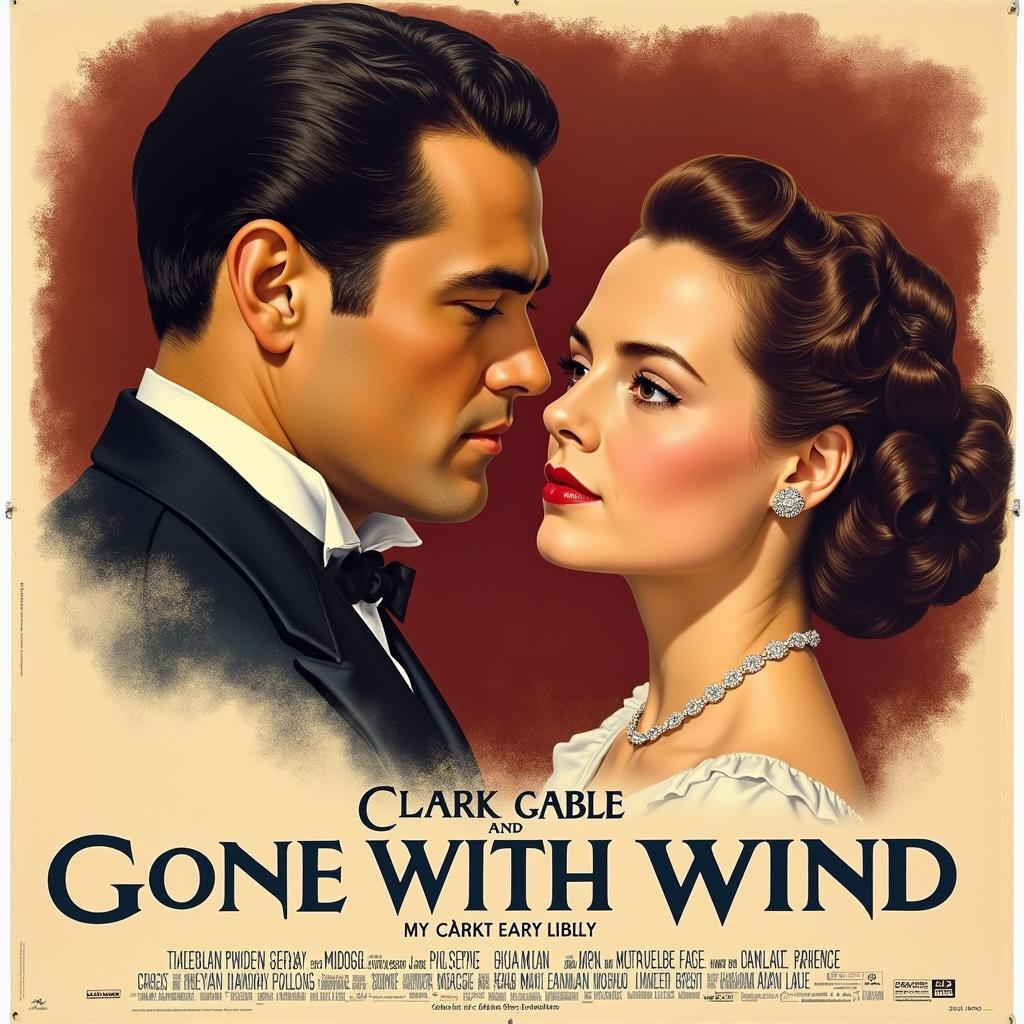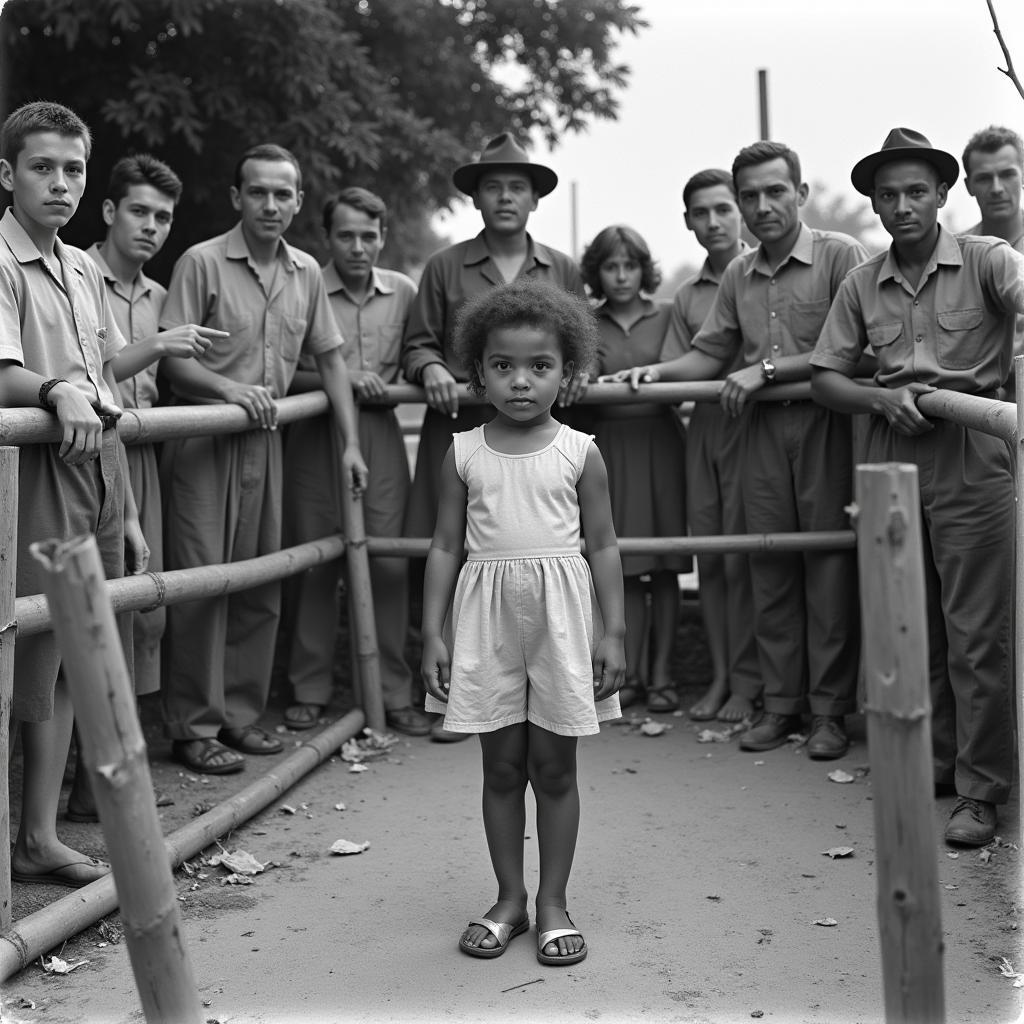African American Characters in Gone with the Wind: A Complex Legacy
“Gone with the Wind”, the epic novel-turned-film set against the backdrop of the American Civil War and Reconstruction, holds a controversial place in cultural history. While celebrated for its sweeping narrative and iconic characters, it has also drawn criticism for its romanticized depiction of the antebellum South and its racially insensitive portrayal of African Americans. This article delves into the complex representation of African American characters in “Gone with the Wind,” examining their roles, significance, and the controversies surrounding their depiction.
Serving a Narrative: The Roles of African Americans in “Gone with the Wind”
The African American characters in “Gone with the Wind” primarily occupy roles that reinforce the societal hierarchy of the antebellum South. They are predominantly depicted as domestic servants, loyal to their white masters and mistresses. Mammy, portrayed by Hattie McDaniel, embodies this archetype, serving as a surrogate mother figure to Scarlett O’Hara while simultaneously upholding the Southern social order.
This portrayal, while central to the film’s narrative, perpetuates harmful stereotypes that cast African Americans as subservient and content with their lot in life. The film shies away from portraying the realities of slavery, instead presenting a sanitized version of the institution where enslaved people are depicted as generally content and well-treated.
 Depiction of Plantation Life in Gone with the Wind
Depiction of Plantation Life in Gone with the Wind
Beyond the Stereotypes: Glimpses of Humanity and Complexity
Despite the limitations imposed by the film’s framework, certain African American characters exhibit moments of depth and agency. Mammy, while bound by her role, displays a strong will and often acts as Scarlett’s voice of reason. Her wisdom and strength are evident, even as she navigates the confines of her societal position.
However, these glimpses of complexity are often overshadowed by the broader narrative that reinforces racist tropes. The film’s portrayal of Reconstruction, for instance, perpetuates the myth of newly freed Black people as incapable of handling their newfound freedom. This prejudiced viewpoint ignores the realities of Black resilience and the systemic obstacles they faced during this turbulent period.
A Legacy Marred by Controversy
“Gone with the Wind” remains a cinematic landmark, but its legacy is intertwined with its problematic portrayal of race. Critics argue that the film romanticizes the antebellum South, glossing over the brutality of slavery and perpetuating harmful stereotypes. While some defend it as a product of its time, its enduring popularity necessitates a critical examination of its racial politics.
The film’s success, particularly Hattie McDaniel’s historic Academy Award win for her portrayal of Mammy, highlights the complexities of representation. While McDaniel’s achievement marked a milestone for Black actors in Hollywood, her role itself remains a point of contention, embodying the limited and often stereotypical roles available to Black performers at the time.
Gone with the Wind and the Evolution of Representation
The controversy surrounding the portrayal of African Americans in “Gone with the Wind” underscores the importance of continuous evolution in media representation. As societal understanding of race and racism progresses, it becomes crucial to critically engage with works that perpetuate harmful stereotypes, even those considered classics.
 The Enduring Legacy of Gone with the Wind
The Enduring Legacy of Gone with the Wind
FAQs
Q: What is the significance of Hattie McDaniel’s Oscar win?
A: Hattie McDaniel’s win for Best Supporting Actress in 1940 was historic, marking the first time a Black actor received an Academy Award. However, her role as Mammy, while earning her accolades, remains controversial for its stereotypical portrayal of a Black woman in service to a white family.
Q: How does “Gone with the Wind” depict Reconstruction?
A: The film’s depiction of Reconstruction is widely criticized for perpetuating racist myths. It portrays newly freed Black people as ill-equipped to handle freedom and reinforces the Lost Cause narrative, which minimizes the role of slavery in the Civil War.
Exploring Further
To delve deeper into the themes of race, representation, and the legacy of “Gone with the Wind”, consider exploring these resources:
-
African Cup of Nations Preview – This article provides insights into a significant cultural event that celebrates African identity and achievement.
-
African Golden Wolf – Learn about a fascinating animal native to Africa, expanding your knowledge of the continent’s diverse wildlife.
By engaging with diverse perspectives and continuing to learn, we can promote a more nuanced understanding of African American history and culture.
Need further assistance understanding the portrayal of African Americans in “Gone with the Wind”? We’re here to help! Contact us at:
- Phone: +255768904061
- Email: [email protected]
- Visit us: Mbarali DC Mawindi, Kangaga, Tanzania
Our team is available 24/7 to answer your questions and provide support.

